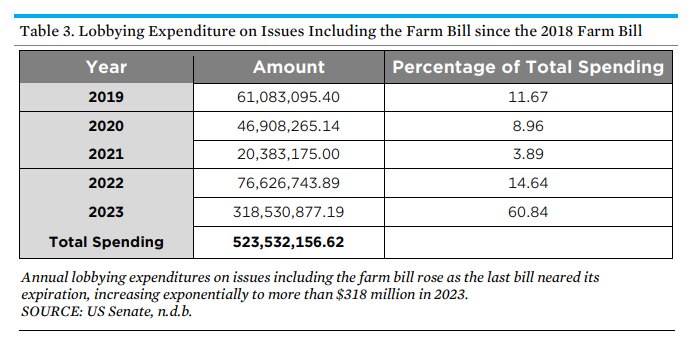By Jared Hayes and Bennett Rosenberg
For nearly 40 years, the Department of Agriculture annually paid more than 10,000 farmers billions in taxpayer-funded farm subsidies or disaster relief, a new Environmental Working Group analysis finds.
Farmers are eligible to receive farm subsidies or disaster payments even if they have collected a payment every year for nearly four decades. And some members of Congress want to use the farm bill debate to increase these payouts for a select few farmers – while putting a ceiling on payouts to those who most need them, recipients of Supplemental Nutrition Assistance Program benefits, also known as SNAP.
Data from the USDA show that between 1985 and 2023, a total of 10,249 recipients got farm subsidy payments every year. The average recipient collected $1,090,970 over the 39-year period, for a total of $11.18 billion. The top 10 repeat farm subsidy recipients collected between $9 and $20 million each during this period. (See Table 1.)
Table 1. The 10 largest recipients of consecutive federal farm payments annually between 1985 to 2023.

Some subsidy recipients who received payments for 39 consecutive years neither work nor live on a farm, EWG found. In fact, 48 of the 10,250 repeat recipients live in the nation’s 50 largest cities, despite a requirement that farm subsidy recipients be “actively engaged in farming.”
Between 1985 and 2023, farm subsidy programs paid farmers when crop prices fell below price guarantees set in the federal farm bill or when crop revenues fell below averages. Between 1996 and 2014, farmers also received “direct” subsidy payments linked to historic crop production. Disaster payments have been paid through annual spending bills, permanent disaster programs, and temporary disaster programs.
EWG did not obtain data on subsidies before 1985. Farmers are also eligible for crop insurance premium subsidies, but federal law prevents the USDA from disclosing information about individual crop insurance subsidy recipients.
Farm bill framework
Some members of Congress are seeking to increase these subsidies – primarily to benefit a few thousand peanut, cotton and rice farmers – and are proposing to restrict future increases in SNAP benefits.
The House Agriculture Committee is planning to vote on the 2024 Farm Bill later this month. Committee Chairman Glenn “G.T.” Thompson (R-Pa.) proposed to increase farm subsidies in a recent framework for the legislation.
Farm subsidy recipients qualify for payments if their annual adjusted gross income is below $900,000 a person, or $1.8 million for a farmer and his or her spouse, and their farm sales top $1,000. By contrast, anti-hunger assistance programs are subject to much stricter income and asset tests, and low-income people remain on SNAP benefits for an average of just 12 months.
Click here to see more...